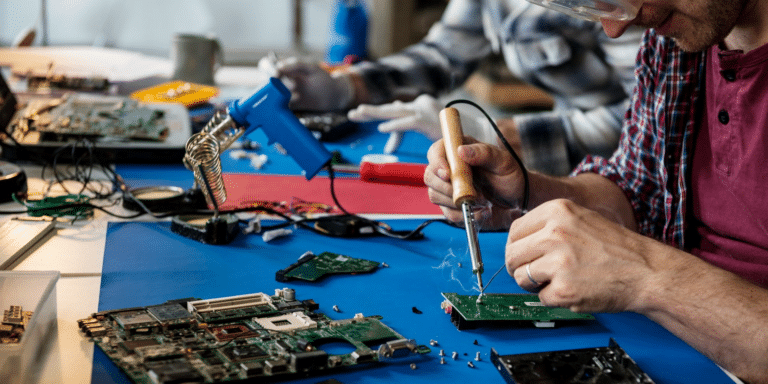Image Commercially Licensed from: Unsplash
Artificial intelligence (AI) and machine learning (ML) transform software development and testing. As these technologies become more prevalent, testers must adapt how they work with AI/ML developers and stakeholders. Effective collaboration, communication, and automation testing ensure that AI/ML systems are thoroughly and adequately tested.
This article will discuss how testers can collaborate and communicate with AI and ML developers and stakeholders.
Understand the basics
Start by understanding that AI and ML rely on data – and lots of it – to detect meaningful patterns that can then guide automated decisions and predictions.
Developers train machine learning models on large datasets, providing many examples that enable an algorithm to learn how to map different inputs to desired outputs over time. Testing data is used to validate the models are working as expected before being put into production.
It’s also crucial to know that while AI promises business value via insights and automation, the technology has blindspots. Machine learning models can perpetuate biases that exist in training data. They also lack human context and judgment, making explainability and transparency around AI decision-making crucial.
Defining Expectations for AI/ML Testing
Start by facilitating focused sessions with technical and business stakeholders to align on core objectives, requirements, and success criteria. Document these diligently. Seek to identify high-risk areas like security, fairness, safety, and unintended outcomes that require rigorous testing.
Define quantitative success metrics and thresholds for performance, accuracy, error rates, and other key parameters. Outline how models will be evaluated pre and post-deployment through cross-validation, A/B testing, and monitoring.
Develop clear processes for reporting issues found during testing, including severity levels and escalation protocols. Create feedback loops to capture insights that can rapidly improve models.
Choose the Right Tools
Testing machine learning systems necessitates an evolved toolkit for evaluating dynamic, data-fueled software that continues learning after deployment. Rather than testing static code logic, QA analysts must verify customized AI algorithms and models that extract insights from new data flowing through production systems.
While coding fluency isn’t essential, become conversant in popular ML programming frameworks like TensorFlow, PyTorch, or Keras to understand how engineers build and iterate on neural networks.
In addition to open-source frameworks, leveraging a cloud-based test automation platform like LambdaTest can be extremely beneficial for testing ML applications. LambdaTest offers scale, speed, and advanced automation capabilities specifically designed for AI/ML testing needs
Adopting an Exploratory Mindset
Artificial intelligence and machine learning systems pose unique challenges for testing due to their non-deterministic and constantly evolving nature. Adopting an exploratory mindset is essential for testers to address AI/ML complexity.
With exploratory testing, testers take an investigative approach focused on learning versus pass/fail assessments. Exploratory testing emphasizes curiosity, creativity, and flexibility to uncover insights about a system’s capabilities and flaws.
For AI/ML, this means crafting dynamic test charters focused on high-risk areas versus pre-defined test cases. Rather than scripts, utilize checklists and heuristics to guide deep interactive sessions with models.
Collaborate with the AI/ML Developers
Testing machine learning systems requires a highly collaborative approach between QA and the engineers building the product. To be effective, testers should initiate open lines of communication and seek to comprehend both the human and technical parts of the systems being developed.
Start by asking developers plenty of questions – don’t assume all AI/ML application aspects will be intuitive or familiar. Request architects walk you through the data pipelines, model training processes, underlying algorithms, and how predictions are made.
As testing progresses, maintain an open line of communication to provide visibility and reassurance. Convey what tests you are running and their limitations in surface area and environments covered. Forewarn technology leaders that early results may reveal gaps between stakeholder expectations and current model capabilities.
Conclusion
Testing artificial intelligence and machine learning systems demands teamwork and constant communication between those building the technology and those tasked with assessing it.
By embracing a collaborative spirit and aligning on shared objectives, testers can maximize their positive impact and bolster the adoption of AI that users can trust.
Rather than be intimidated by the complexity, they should candidly talk with developers to demystify unfamiliar concepts. Equipped with basic literacy around data, algorithms, and training processes, they can design pragmatic test plans that evaluate real-world viability.
Published by: Nelly Chavez








